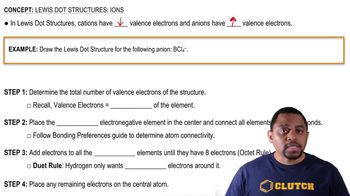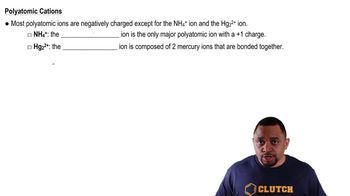Multiple Choice
Draw the Lewis Dot Structure for the following cation:NH4+.
 Verified step by step guidance
Verified step by step guidance Verified video answer for a similar problem:
Verified video answer for a similar problem:



 3:11m
3:11mMaster Lewis Dot Structures: Ions (Simplified) Concept 1 with a bite sized video explanation from Jules
Start learning